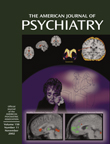Adolescent substance abuse is a serious and widespread problem. Substance abuse among adolescents has been increasing during the 1990s. Lifetime substance use rates for adolescents have been fairly high. For instance, in 2000, the alcohol use lifetime prevalence rate was almost 90% and the lifetime rate of use of any illicit drug (other than alcohol or tobacco) was 54%. As one of the authors of this manual points out, substance abuse among adolescents is particularly dangerous because it occurs during a critical developmental period and also because it is associated with the three biggest causes of mortality among young people—injury, suicide, and homicide. It is unfortunate, as also pointed out in this book, that many physicians underestimate the extent of the adolescent’s problems and consequently overestimate their own ability to treat the adolescent’s addictions. Given the scope of the problem, it is obvious that a comprehensive, clinically oriented adolescent substance abuse treatment manual would be timely and of great need.
Todd Wilk Estroff, a private practitioner in Atlanta, put together and edited this interesting, clinically oriented manual of adolescent substance abuse treatment. The book consists of 17 chapters. The first three chapters review general issues such as epidemiology, predisposing factors, routes of abuse, and specific drugs. This is a fairly well-written, informative, and revealing part of the book. The next four chapters review the diagnosis and comorbidity of adolescent substance abuse and the medical and psychiatric evaluation of substance-abusing adolescents. The discussion of substance abuse diagnosis reminds the reader of the historical confusion regarding the terminology of substance abuse because most definitions are not standardized and many diagnostic systems are more qualitative than quantitative. The chapter on psychiatric evaluation is especially well written and clinically oriented.
This part of the book sets the stage for the remaining 10 chapters, which are focused on treatment issues such as treatment planning and case management, outpatient treatment, inpatient programs, use of medications with substance abusing adolescents, 12-step programs, spirituality and its role in substance abuse treatment, family treatment, relapse, the impact of substance abuse on adolescent development, and, last but not least, untreatable substance-abusing adolescents. Most of these chapters are very practical and comprehensive. For instance, the chapter on outpatient treatment briefly discusses the latest fad—the boot camps. The authors do not think much about the role of boot camps in the treatment of adolescent substance abuse, because the boot camps are more punitive than therapeutic. The inpatient treatment chapter presents an idealized description of a very time-demanding program designed to provide optimal care. It provides tips on what to do in difficult situations, e.g., “unit freeze” when patients band together against treatment. It also emphasizes the critical role of the 12-step program for recovery. The inpatient program described here probably could be only dreamed about in most places; nevertheless, it is a very useful and practical model. One of the treatment chapters also points out the importance of the spiritual component of the recovery, which is frequently overlooked (spirituality is not religion in this context). The chapters on relapse and on untreatable substance-abusing adolescents are also very useful. Some chapters contain very good discussions of several case examples.
This is a well-conceptualized and well-written book. It provides a wealth of practical information and advice. It is well referenced. The authors share with the reader their extensive and sometimes contradictory clinical wisdom (they point out their different opinions about some treatment strategies). I think the fact that Dr. Estroff not only edited the volume but also authored or coauthored 13 of the 17 chapters helped enormously to tie the book together. However, the manual also has a few weaknesses. For instance, I missed a discussion of cultural differences and factors in substance abuse through the treatment chapters. There are also a few small factual mistakes—for instance, I do not believe that the South American herbal tea called mate is made from coca leaves. Nevertheless, I feel that this is an excellent book that fills a great need. It is quite comprehensive, practical, clinically oriented, and informative. I would highly recommend it as a “must-have, must-read” manual to anybody interested in adolescent substance abuse.

